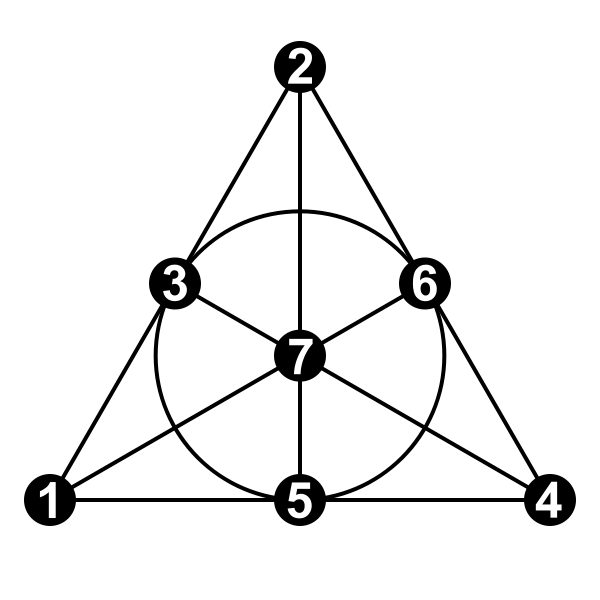Mathematics
Source : Reader’s Article
Date : April 2020

If the Secret doctrine was published in 1888, a few years later, in 1892 Gino Fano an Italian mathematician published the article “Sui postulati fondamentali della geometria proiettiva“. The article was dedicated to finite projective spaces. Fano came to the concept of finite space that is now known as Fano planes. In this space, all the planes consist of seven points and seven lines. The Fano plane is the smallest possible example of a projective plane. It has exactly seven points that lie on seven lines. In modern math, the Fano plane is an example of a finite incidence structure, so many of its properties can be established using combinatorial techniques and other tools used in the study of incidence geometries and algebra.
The picture of Fano Plane demonstrates how close such concept to Secret Doctrine’s 7 principles numbering.
The analogy between 7 principles and 7 globes of SD exhibit further deep similarity so further analysis of such analogy can be done by the reader himself.
Read more : Wikipedia

